NBA Draft Scouting Reports
The 2014 NBA Draft goes Thursday night. We've profiled 32 top prospects, in depth, over the past two weeks, and this is your one-stop shop for all our draft scouting reports. You'll find them below, in order of where we have each player being selected in our 2014 NBA Mock Draft (via Joseph Casciaro).
No. 1: Andrew Wiggins, SG/SF, Kansas
Wiggins is one of the top talents in the draft, and will be one of the first three names called Thursday night. His ultimate potential is only second to Joel Embiid's. He's already a terrific defender and profiles as a versatile player on both ends of the floor. The athleticism and defense are such that even his downside is immense. The main knock against the Canadian: he's too passive. The hype may have gone overboard at times, but the talent is real.
Tap here for Wiggins' full scouting report, including his bio, stats, strengths, and weaknesses.
No. 2: Jabari Parker, SF/PF, Duke
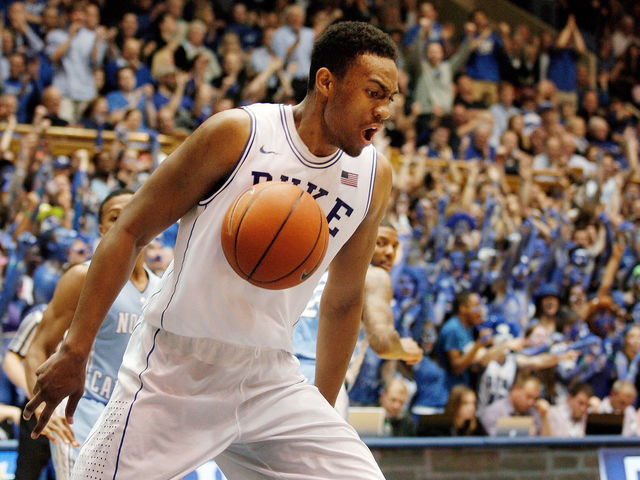
Nobody in the 2014 class can score like Parker. However, there are concerns about his defense and whether he's closer to his ceiling than Andrew Wiggins and Joel Embiid. But make no mistake, Parker's exceptional with the ball, and has above-average passing and rebounding skills. He'll be able to score immediately in the NBA, which means he won't fall lower than No. 5.
Tap here for Parker's full scouting report, including his bio, stats, strengths, and weaknesses.
No. 3: Joel Embiid, C, Kansas
Embiid's the most intriguing talent in the draft and was set to be the first-overall pick until he broke his foot. Surgery will keep him out for four-to-six months. He remains the unquestioned top name in terms of ultimate upside, but concerns about the health of his back, which sidelined him this past season, and now foot - and the subsequent deferral of his impact - could see him slide outside of the top five altogether. In the end, health problems aside, Embiid's too talented and has too much upside to fall outside of the top five.
Tap here for Embiid's full scouting report, including his bio, stats, strengths, and weaknesses.
No. 4: Dante Exum, PG, Australia
Exum's the great unknown from Australia, but at 18 he has the body and raw skill to shine in the NBA. He's big for the position, which has many considering he'll be a plus defender, and he's very athletic - he can get to the rim and finish in exciting fashion. While he reportedly tested off the charts psychologically and in terms of intelligence, he's still got work to do with his shot. He could go at No. 2, and is unlikely to slip past No. 5.
Tap here for Exum's full scouting report, including his bio, stats, strengths, and weaknesses.
No. 5: Noah Vonleh, PF, Indiana
Vonleh, only 18, is an enormous human being, in contention to be taken in the top five. One of the country's top rebounders, he shot almost 50 percent from three, and has the tools and athleticism to be an elite NBA defender. He's the rare big man ready to help space the floor immediately, and he was a versatile scorer in the paint for the Hoosiers. Raw, but tons of upside.
Tap here for Vonleh's full scouting report, including his bio, stats, strengths, and weaknesses.
No. 6: Aaron Gordon, PF, Arizona

Gordon will immediately become one of the game's best in-game dunkers, regardless of when he's selected. An athletic freak, and while his shot needs work, he's a hard worker and one of the best defenders in the class. Immense upside due to his physical tools. Expect to see him taken in the No. 5-to-10 range.
Tap here for Gordon's full scouting report, including his bio, stats, strengths, and weaknesses.
No. 7: Julius Randle, PF, Kentucky
Randle's one of the top power forwards available, who averaged a double-double as a freshman on a Kentucky squad that went to the NCAA Tournament championship. His body is NBA-ready, and he's a banger - he gets his points and rebounds the hard way. There are concerns about his defense, and he isn't as good as other power forwards Noah Vonleh and Aardon Gordon at spacing the floor. Should go between No. 5 and 10.
Tap here for Randle's full scouting report, including his bio, stats, strengths, and weaknesses.
No. 8: Marcus Smart, PG, Oklahoma State
A "gamer" and a leader, Smart is physical, gets to the rim, finishes well, and is a difference maker on defense. The highest-ranked non-freshman in the draft, Smart went into the stands four months ago to confront a fan, and was suspended three games for the incident, which remains tied to his draft stock. His shot needs work, but he's the second-best point guard in the class behind Dante Exum. Expect to see him taken in the top 10.
Tap here for Smart's full scouting report, including his bio, stats, strengths, and weaknesses.
No. 9: Doug McDermott, SF, Creighton

McDermott was the College Player of the Year and led the nation in scoring - you don't do that without a ton of skill. While he projects as an elite spot-up shooter, there are concerns about his athleticism and defense at the NBA level. He could go anywhere from No. 7 to 16.
Tap here for McDermott's full scouting report, including his bio, stats, strengths, and weaknesses.
Related: theScore's 2014 NBA Mock Draft
No. 10: Nik Stauskas, G, Michigan
Stauskas is arguably the best shooter in the draft. He continued to evolve in college, and not only can he hit from anywhere on the floor, he can get to the line, where he's automatic. He lacks strength and athleticism, though, and there are concerns about whether he can create for others, and he could be labeled "just a shooter" in the NBA - not that there's anything wrong with that. He has a shot at the lottery, and shouldn't slip past No. 16.
Tap here for Stauskas' full scouting report, including his bio, stats, strengths, and weaknesses.
No. 11: Gary Harris, G, Michigan State
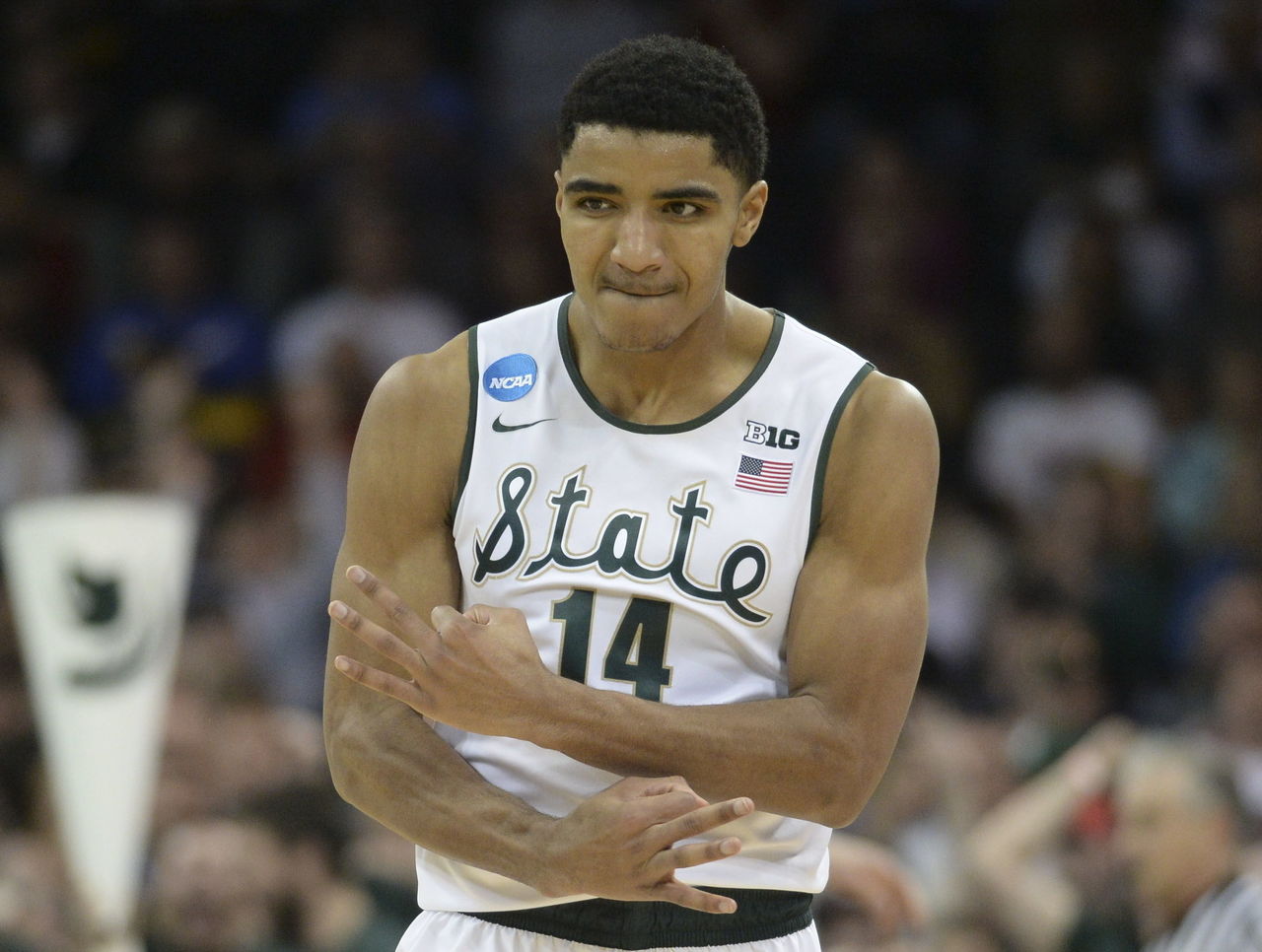
Harris, a sophomore, shined in the NCAA Tournament and is one of the elite scorers available. He was a streaky shooter in college, but his stroke looks pure, a nice compliment to his slashing game. He's an active and savvy defender, but his potential is limited if teams see him as a two guard, as he's undersized for the position. He could go late in the lottery, but won't slip much further from there.
Tap here for Harris' full scouting report, including his bio, stats, strengths, and weaknesses.
No. 12: Jusuf Nurkic, C, Bosnia
Nurkic is possibly both the biggest player in the draft, and the most unknown, having not participated in the pre-draft combine or individual workouts. He possesses a soft touch around the rim, but he isn't in the best shape, and there are concerns in turn about his athleticism. A 19-year-old project, his range is wide in the first round, anywhere from No. 12 to late in the first round.
Tap here for Nurkic's full scouting report, including his bio, stats, strengths, and weaknesses.
No. 13: Rodney Hood, SG, Duke
Hood, very big for the two spot, can shoot. He makes it look effortless. Despite his size, he isn't a great defender, and his rebounding leaves more to be desired. But he can shoot, as evidenced by his 42 percent mark from 3-point range. Projected to go anywhere from No. 13 to 25.
Tap here for Hood's full scouting report, including his bio, stats, strengths, and weaknesses.
No. 14: Dario Saric, PF, Croatia
When it comes to Croatian forward Dario Saric, it may actually be more reasonable to embrace the unknown, as the 6-foot-10, 20-year-old looks like the real deal. He also has swagger for days, so he's likely to be polarizing as an NBA player.
Tap here for Saric's full scouting report, including his bio, stats, strengths, and weaknesses.
No. 15: James Young, SF, Kentucky
Young impressed at the NCAA Tournament, scoring 37 points for Kentucky in its last two games. He can score, and has an exceptional ability to get to the rim. While his 3-point shooting must improve, he's only 18, and his stock has steadily been on the rise. His range starts at No. 9, and it's unlikely a talent like Young falls beyond No. 20.
Tap here for Young's full scouting report, including his bio, stats, strengths, and weaknesses.
No. 16: Elfrid Payton, PG, Louisiana Lafayette
Payton, the darling of the pre-draft process, is built more or less how you'd ask for a point guard to be built, save for being a little on the wiry side - he's tall, he's long, and he's incredibly fast. The elephant in the room: Payton can't shoot. At all. But he's only 20 years old, and can get to the rim. A polarizing prospect, it's doubtful he slips past No. 20.
Tap here for Payton's full scouting report, including his bio, stats, strengths, and weaknesses.
No. 17: Zach LaVine, G, UCLA
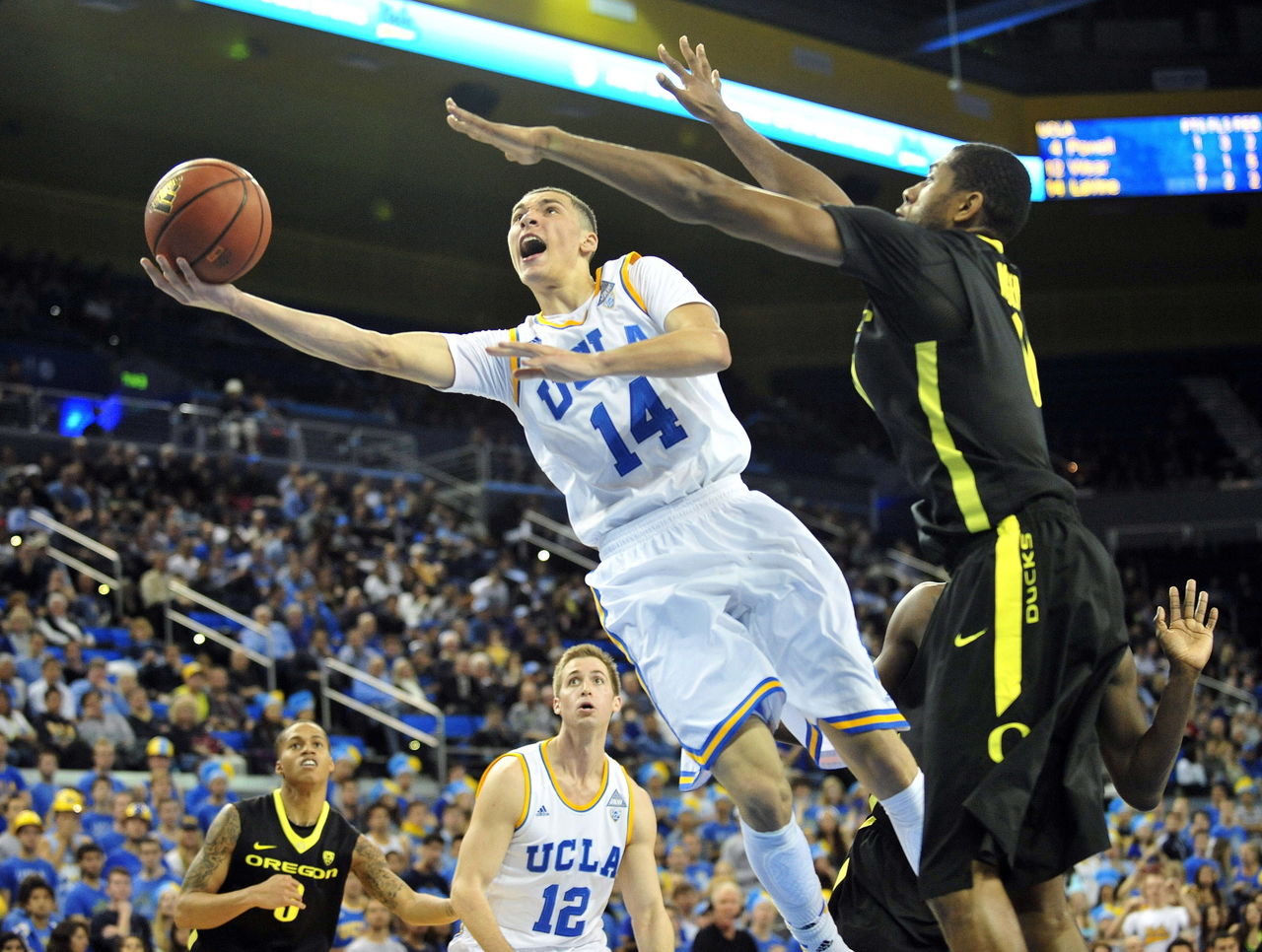
LaVine's the poster child for potential over production. After an impressive freshman year, he could be one of the draft's biggest game-changers, if everything breaks right. Big enough to stick at the two, he needs to add strength and make better decisions with his shot. He'll need time to develop, but his ceiling's high. His range starts around No. 10 and extends into the early 20s.
Tap here for LaVine's full scouting report, including his bio, stats, strengths, and weaknesses.
No. 18: T.J. Warren, SF, North Carolina State
Warren, 20, was the nation's third-leading scorer, and here he is on our board at No. 18; such is the transition from NCAA to the pros. His body is NBA-ready, and you simply don't score as much as he did without top-flight offensive talent. His offensive holes: he struggles to get to the line and hit threes, and his athleticism has been questioned. A polarizing player, he could go anywhere from No. 14 to 27.
Tap here for Warren's full scouting report, including his bio, stats, strengths, and weaknesses.
No. 19: Adriene Payne, PF, Michigan State
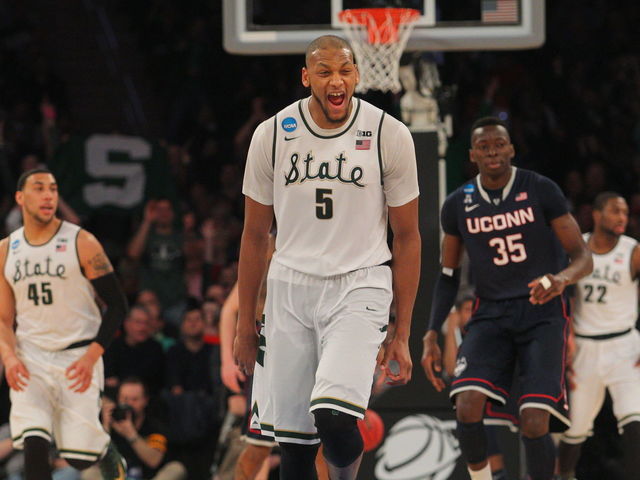
Payne's old, a senior, big but not strong, but he's going to be a very solid NBA player. He can help space the floor from day one, and has 3-point range. While he may not have the highest ceiling, he's athletic and a high-character player, too. He's been mocked as high as No. 7, and should go in the top 20.
Tap here for Payne's full scouting report, including his bio, stats, strengths, and weaknesses.
Related: 1 on 1 with NBA prospect Adreian Payne
No. 20: Tyler Ennis, PG, Syracuse
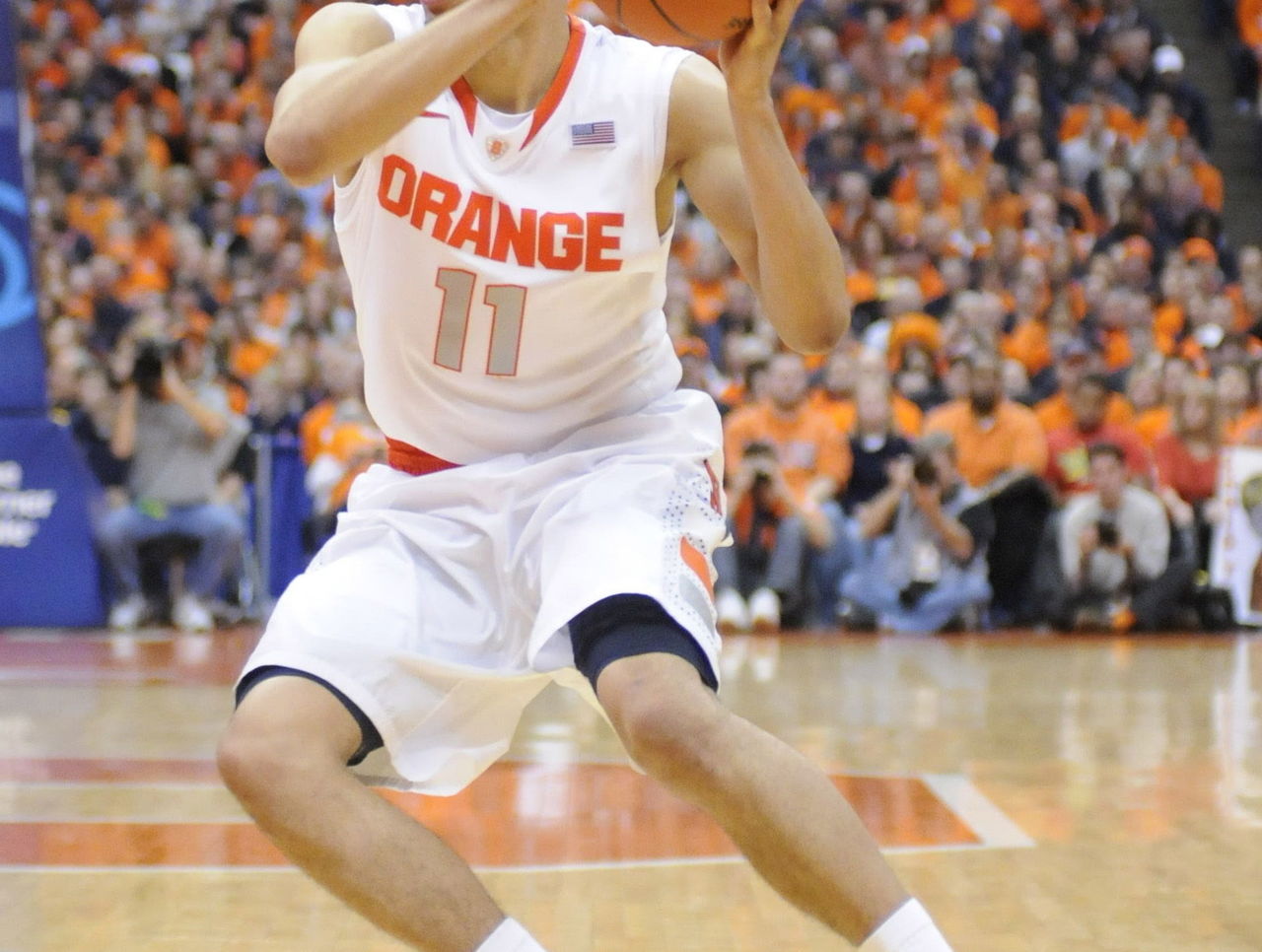
Ennis is a safe choice - he's steady, in control, and a solid decision maker. He sees the floor well, and can shoot consistently from mid-range. He may be slightly on the small side for a point guard, but will contribute at the NBA level. Teams drafting on upside could take him as high as No. 8, but he's comfortably in the 12 to 20 range.
Tap here for Ennis' full scouting report, including his bio, stats, strengths, and weaknesses.
No. 21: Kyle Anderson, SF/PF, UCLA
A point guard in a power forward's frame, Anderson doesn't have a clear position on either end of the floor at the next level. He possesses excellent court vision, and can create for himself and others, but he'll never be a good defender. He put up great numbers this past season, and could be deadly in the right situation. His stock has been all over the place, and while he's no longer expected to go in the lottery, it's unlikely he falls to the second round.
Tap here for Anderson's full scouting report, including his bio, stats, strengths, and weaknesses.
No. 22: Shabazz Napier, PG, Connecticut
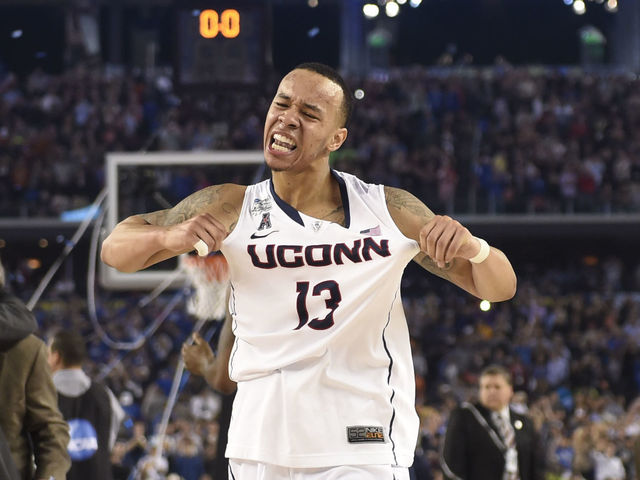
Napier's a winner and a leader, with the ability to score from all over the floor. He's got NBA range, and he's an excellent defensive player. The draft's only two-time NCAA champion, and a senior, he's a bit undersized and plays offense more like a two-guard. He could probably land as high as No. 18, but is more likely to be taken late in the first round.
Tap here for Napier's full scouting report, including his bio, stats, strengths, and weaknesses.
No. 23: Jordan Clarkson, PG, Missouri
Clarkson's on the first-round bubble, after a quiet four-year collegiate career at Tulsa and Missouri. One of college ball's best at the pick-and-roll, he can get to the rim and finish thanks to his size. He has the potential to be a solid defender, but his shot needs work, especially from three, where he struggled this past season. Needs to bulk up if he's to remain at the one.
Tap here to view Clarkson's full scouting report, including his bio, stats, strengths, and weaknesses.
No. 24: Mitch McGary, PF, Michigan
McGary is about as big an unknown as you can get for a sophomore coming off two seasons in a major conference. Back injuries limited him to eight games last year, and he served a one-year suspension for marijuana use. He's on the first-round bubble due to his potential - there are few true big men in this class, and McGary is a presence in the paint. He can shoot the jumper out to 18 feet, too, but remains relatively unproven. He's unlikely to slide beyond the mid-30s.
Tap here for McGary's full scouting report, including his bio, stats, strengths, and weaknesses.
No. 25: Jarnell Stokes, PF, Tennessee
Stokes is a bit undersized at the four, but at 20 is a terrific rebounder who could be a late first-round steal. He does the dirty work inside, and ranked among the top bigs in performance on post-ups and put-backs. He's a solid defender, too. The main knock against him is his size. He won't go any higher than No. 25, and shouldn't slip deep into the second round.
Tap here for Stokes' full scouting report, including his bio, stats, strengths, and weaknesses.
No. 26: P.J. Hairston, SG, UNC/D-League
There may be no player's landing spot more worth watching on draft day than Hairston's, as the former UNC guard spent the 2013-14 season in the D-League, a rare path for a pre-draft prospect. Great size, strong at the rim, and a tough defender, but his mid-range game needs work. He was suspended from UNC, leading to questions about his character. He projects, along with other wings of his ilk, to go anywhere from No. 13 to late in the first round.
Tap here for Hairston's full scouting report, including his bio, stats, strengths, and weaknesses.
No. 27: Clint Capela, PF, Switzerland
Capela's an intriguing European prospect, who was one of the top rebounders and shot blockers in the top French league last season. Only 20, he profiles as an elite rim protector, but also uses his speed to get out in transition on offense. Patience will be required for the team that drafts him, in order for him to develop into an NBA player, but there's upside here. He probably won't go higher than No. 18.
Tap here to view Capela's full scouting report, including his bio, stats, strengths, and weaknesses.
No. 28: K.J. McDaniels, SF, Clemson

McDaniels dropped jaws at the 2014 NIT Tournament and is a legitimate NBA prospect who should help at both ends of the floor immediately. Very athletic, a strong defender with an elite shot-blocking rate, and he really shines in transition. McDaniels needs to work on his 3-point shot, but his defense is NBA-caliber. You could make a case for him at No. 18, but he won't slip out of the first round.
Tap here for McDaniels' full scouting report, including his bio, stats, strengths, and weaknesses.
No. 29: Jordan Adams, SG, UCLA
Adams lost 22 pounds between the end of the college season and draft combine in Chicago, but he still may be one of the least athletic players to be selected in the first round. He can score with the best of them, though, and racked up steals on defense. Concerns about his athleticism means he's a late first-round pick or an early second-round pick.
Tap here to view Adams' full scouting report, including his bio, stats, strengths, and weaknesses.
No. 30: Cleanthony Early, SF, Wichita State
Early, at 23, is older than other wings being looked at outside of the lottery, but the man can shoot. Big for a small forward, he's physical - he attacks the glass and can score inside, and has a good shooting touch. A strong defender, too, Early could be a steal in the No. 20-30 range.
Tap here to view Early's full scouting report, including his bio, stats, strengths, and weaknesses.
Bonus Scouting Profiles
Bogdan Bogdanovich, SG, Serbia
Bogdanovic is an intriguing late first-round option who is likely to stay in Europe for at least one more season, providing teams with multiple picks or no obvious need with a draft-and-stash candidate. Ideal package for an offensive shooting guard: long wing span, tight handle, solid court vision, and impressive from beyond the arc. Turnovers were an issue in the Adriatic League, and he doesn't possess elite athleticism.
Tap here for Bogdanovich's full scouting report, including his bio, stats, strengths, and weaknesses.
Jerami Grant, SF, Syracuse
Grant flashed a lot of tools in two years at Syracuse, and is incredibly athletic, especially above the rim. An active defender with a strong mid-range game, he's a power forward in a small forward's body, and he can't hit the triple. More of a long-term play than other wings in the first round, which means he's likely to slip into the second round.
Tap here for Grant's full scouting report, including his bio, stats, strengths, and weaknesses.